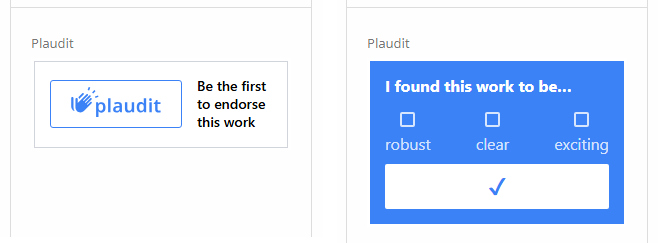Plaudit — How to Give More Than One Like to a Scientific Article
Is it possible to give more than one like on Facebook, Instagram, LinkedIn, and other social networks? Have you ever wanted, just once, to “like with both hands”? If so — your wish has come true on the platform of our journal Challenges and Issues of Modern Science.
We have implemented the Plaudit system — an innovative way to evaluate scientific publications that allows you to express your support by selecting one or several endorsement labels.
Plaudit is an open academic evaluation platform that works as an alternative to traditional metrics (such as citation counts or impact factors). It enables researchers to publicly and transparently endorse articles they consider high-quality or significant by leaving a brief endorsement associated with their ORCID profile.
This system promotes the integrity of academic evaluation, supports open science, and stimulates scientific communication by providing a positive context to publications.
On the sidebar of each article’s web page, you will see the Plaudit widget with the question:
“I found this work to be…”
The widget offers three endorsement label options — robust, clear, exciting — which mean:
-
robust — the research is reliable, well-founded, methodologically consistent; the results are confirmed or supported by strong evidence;
-
clear — the article is understandable, well-structured, logically organized, with a clear presentation of the problem, objectives, methods, results, and conclusions;
-
exciting — the work is innovative, intriguing, stimulates further research, or opens unexpected perspectives in the field.

You can select one or several of these labels to express your opinion about the quality and value of the publication.
Ratings submitted via Plaudit are automatically transmitted to Crossref services, while a backup copy of endorsements is stored on the Internet Archive to ensure long-term accessibility and transparency.
The Plaudit widget functions only on article web pages that have a DOI.


















